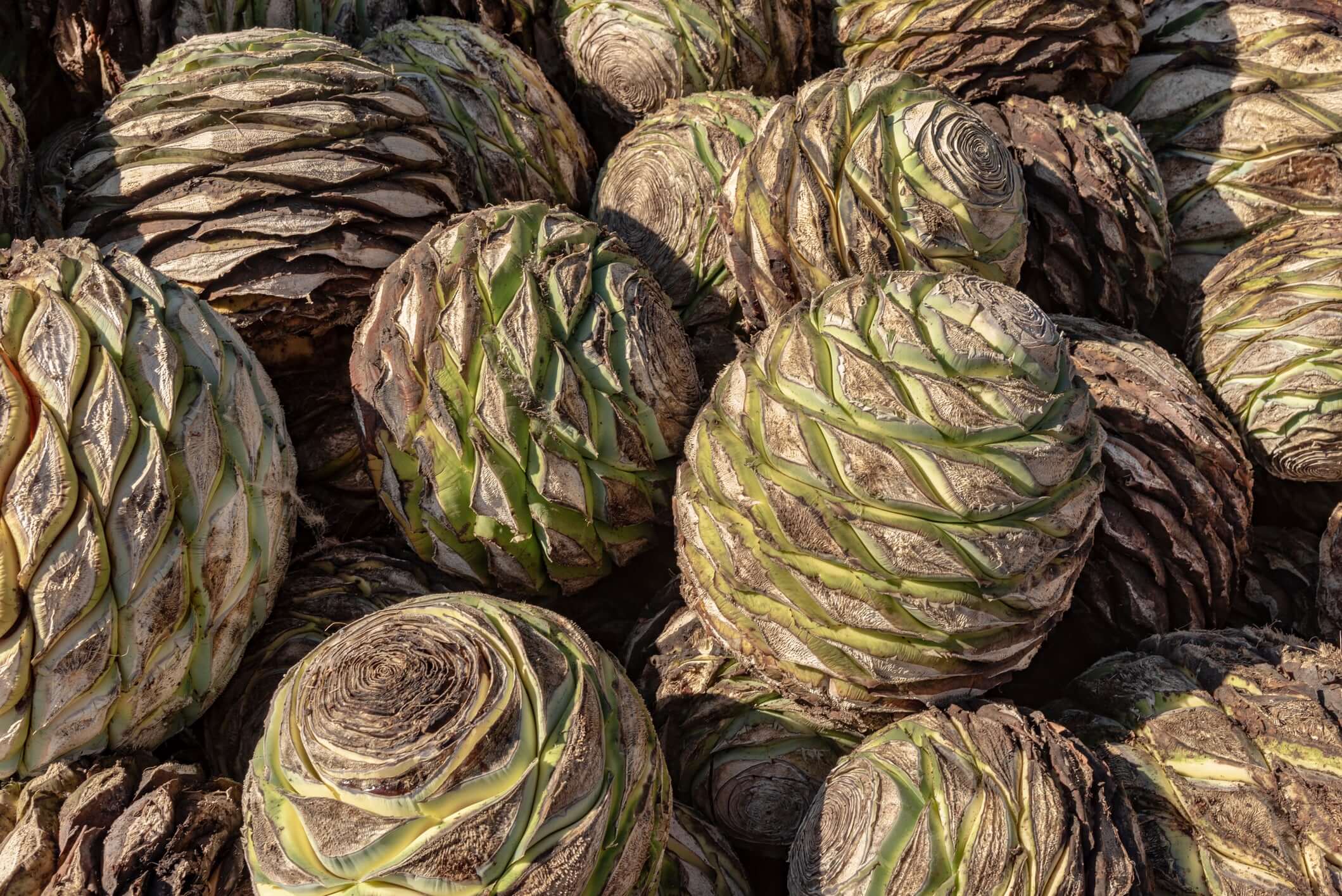An Alcohol Profile: Mezcal
- by ShopSK .com
-

When it comes to Mexican spirits, Mezcal stands out as one of the most distinctive and intriguing options. Often overshadowed by its more famous cousin, Tequila, Mezcal has been steadily gaining popularity among alcohol enthusiasts around the world. Its unique smoky flavor, artisanal production process, and cultural significance make it an excellent choice for those looking to explore new and exciting beverages. Whether you're an experienced Mezcal drinker or someone who's just starting to explore the world of spirits, this article will provide you with a comprehensive guide to everything you need to know about Mezcal.
What is Mezcal?
Mezcal is a distilled alcoholic beverage made from the agave plant. Although Tequila is a type of Mezcal, not all Mezcals are Tequila. What differentiates Mezcal from Tequila is the production process and the variety of agave used. Tequila is made specifically from the Blue Weber agave, whereas Mezcal can be made from many different types of agave plants, giving it a wider range of flavors.
The agave plants used to produce Mezcal are typically roasted in an underground pit, which imparts a distinct smoky flavor that sets Mezcal apart from Tequila. The agave is then crushed, fermented, and distilled, often in traditional methods passed down through generations. This process results in a spirit that’s not only rich in flavor but also steeped in tradition and culture.
Different Types of Mezcal
Mezcal is a diverse spirit, with variations depending on the region it’s produced in, the type of agave used, and the distillation methods. Here are some of the most common types of Mezcal you may encounter:
Espadín Mezcal
Espadín is the most common type of agave used to make Mezcal, and it is the most widely available. Known for its smooth and balanced flavor, Espadín Mezcal offers a great introduction to this unique spirit. It's typically less smoky than some of the other varieties but still carries the signature agave flavor.
Tobalá Mezcal
Tobalá Mezcal is often referred to as the “king of Mezcals” due to its complex and rich flavor profile. Made from the Tobalá agave, which is smaller and rarer than the Espadín, this variety is more difficult to harvest but offers a robust, slightly sweet taste with earthy undertones.
Tepeztate Mezcal
Tepeztate is made from wild agave plants that take longer to mature, sometimes up to 30 years. As a result, Tepeztate Mezcal tends to have a more intense flavor, with a pronounced smokiness and earthy characteristics. It’s a favorite among those who enjoy bold and complex spirits.
Arroqueño Mezcal
Arroqueño Mezcal is made from a large, wild agave plant that takes many years to grow. It’s known for its complex and nuanced flavor, with fruity, herbal, and smoky notes that make it one of the most highly regarded types of Mezcal.
How to Enjoy Mezcal
Mezcal can be enjoyed in many different ways. Whether sipped slowly in its pure form or used as a base for creative cocktails, it’s a versatile spirit that pairs well with a wide range of flavors. Here are some popular ways to enjoy Mezcal:
-
Neat: Mezcal is often best enjoyed neat (without ice) to truly appreciate its complex flavor profile. Simply pour a small amount into a glass and savor it slowly, allowing the smoky and earthy notes to shine through.
-
With a Slice of Orange and Salt: In Mexico, it’s common to enjoy Mezcal with a slice of orange and a pinch of salt. The sweetness of the orange complements the smokiness of the Mezcal, creating a perfect balance of flavors.
-
In Cocktails: Mezcal is increasingly being used in cocktails. It can be substituted for Tequila in classics like the Margarita, or it can be the star of more inventive drinks like the Mezcal Mule or the Oaxaca Old-Fashioned.
Why Choose Mezcal?
There are many reasons why Mezcal is becoming a favorite among liquor lovers. Here are some of the key factors that contribute to its growing popularity:
-
Unique Flavor: The smoky, earthy flavor of Mezcal sets it apart from other spirits, making it an exciting choice for those looking to try something new.
-
Artisanal Production: Many Mezcals are made in small batches using traditional, artisanal methods. This gives the spirit a level of craftsmanship that’s hard to find in mass-produced liquors.
-
Cultural Significance: Mezcal has a deep cultural connection to Mexico, where it has been produced for centuries. Drinking Mezcal can be a way to connect with this rich heritage and experience a piece of Mexican history.
Where to Buy Mezcal
If you’re looking to purchase Mezcal, you may be wondering where to find the best options. The good news is that there are several places where you can buy Mezcal online or in person. Whether you’re looking for a specific variety or just want to explore the wide world of Mezcal, the following options are worth considering:
-
Online Alcohol Delivery: One of the most convenient ways to purchase Mezcal is through an online alcohol delivery service. With just a few clicks, you can have your favorite Mezcal delivered straight to your door. Look for a reliable and well-stocked best online liquor store like ShopSK, where you can find a variety of Mezcals to suit your preferences.
-
Alcohol Shop Near You: If you prefer to shop in person, you can also check out your local alcohol shop near you. Many liquor stores carry a selection of Mezcals, and the staff may be able to help you find the perfect bottle.
-
24-Hour Alcohol Delivery Near You: Some areas offer 24-hour alcohol delivery near you, so you can have Mezcal delivered at any time of day or night. This is especially convenient if you’re planning a late-night Mezcal tasting or party.
Mezcal vs. Tequila: What’s the Difference?
While Mezcal and Tequila are both made from agave, there are some important differences between the two. Tequila is made exclusively from Blue Weber agave and is typically produced in large, industrial distilleries. Mezcal, on the other hand, can be made from a variety of agave species and is often produced in small, family-owned distilleries using traditional methods.
Another key difference is the flavor. Mezcal is known for its smoky, earthy taste, which comes from the way the agave is roasted in underground pits. Tequila, in contrast, tends to have a cleaner, more straightforward agave flavor, with less smokiness.
FAQs about Mezcal
What is the difference between Mezcal and Tequila?
The main difference between Mezcal and Tequila lies in the type of agave used and the production process. While Tequila is made specifically from Blue Weber agave, Mezcal can be made from a variety of agave plants, resulting in a more diverse flavor profile. Mezcal is also known for its smoky flavor, which is a result of roasting the agave in underground pits.
How do you drink Mezcal?
Mezcal can be enjoyed in several ways. It can be sipped neat to appreciate its complex flavors, paired with a slice of orange and salt, or used in cocktails. It’s a versatile spirit that can be enjoyed in many different ways depending on personal preference.
Where can I buy Mezcal online?
You can find Mezcal at various online alcohol delivery services. Websites like ShopSK offer a wide selection of Mezcals, allowing you to explore different varieties and have them delivered straight to your door. Always choose a reputable best online liquor store for a great shopping experience.
Is Mezcal stronger than Tequila?
Mezcal tends to have a higher alcohol content than Tequila, with most Mezcals ranging from 40% to 55% alcohol by volume. However, the strength of both Mezcal and Tequila can vary depending on the brand and specific product.
Can I find 24-hour alcohol delivery for Mezcal?
In some areas, you can find 24-hour alcohol delivery near you. If you’re in need of Mezcal late at night, check for services that offer round-the-clock delivery, ensuring you can enjoy your favorite spirit whenever you want.




